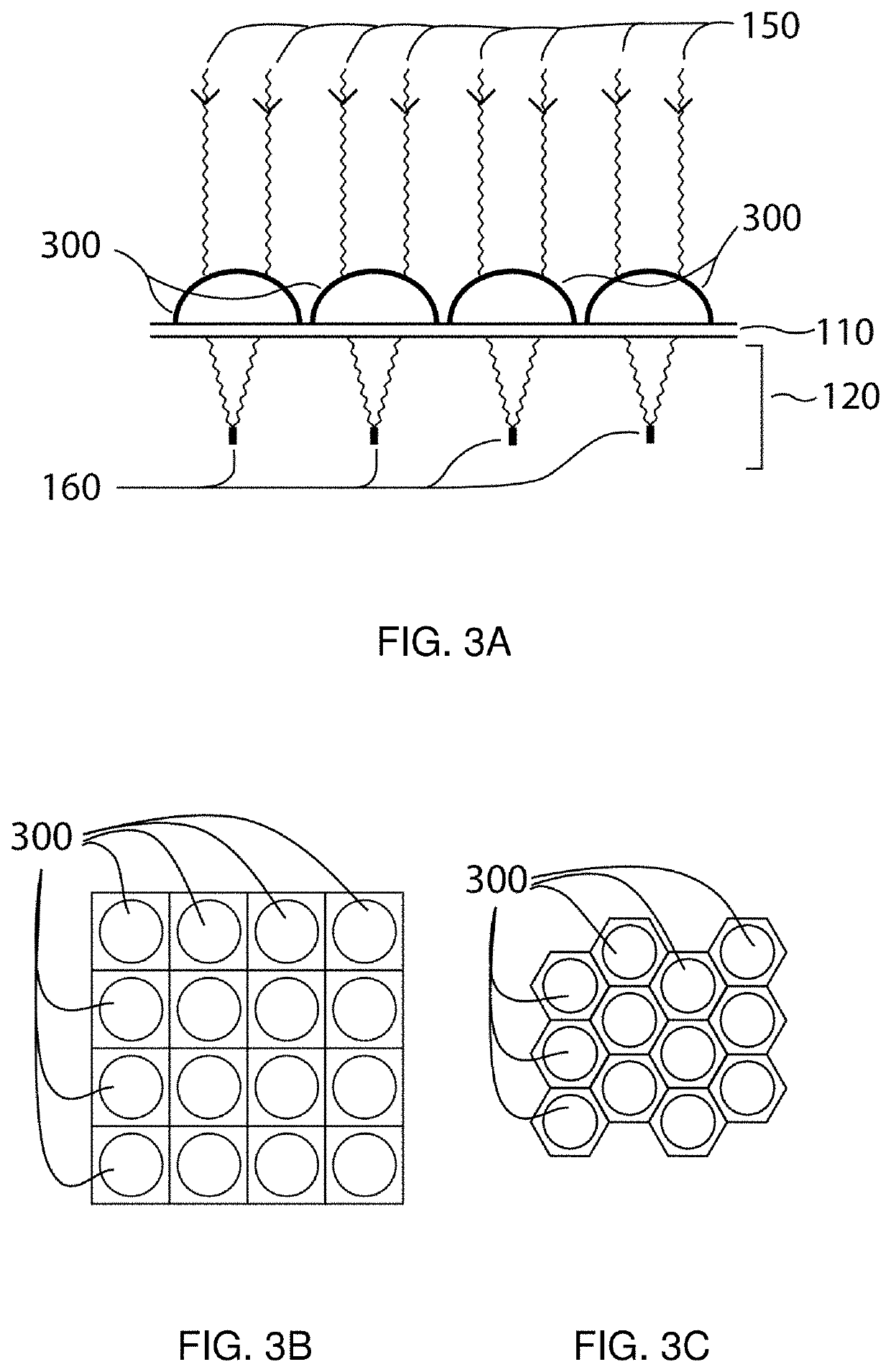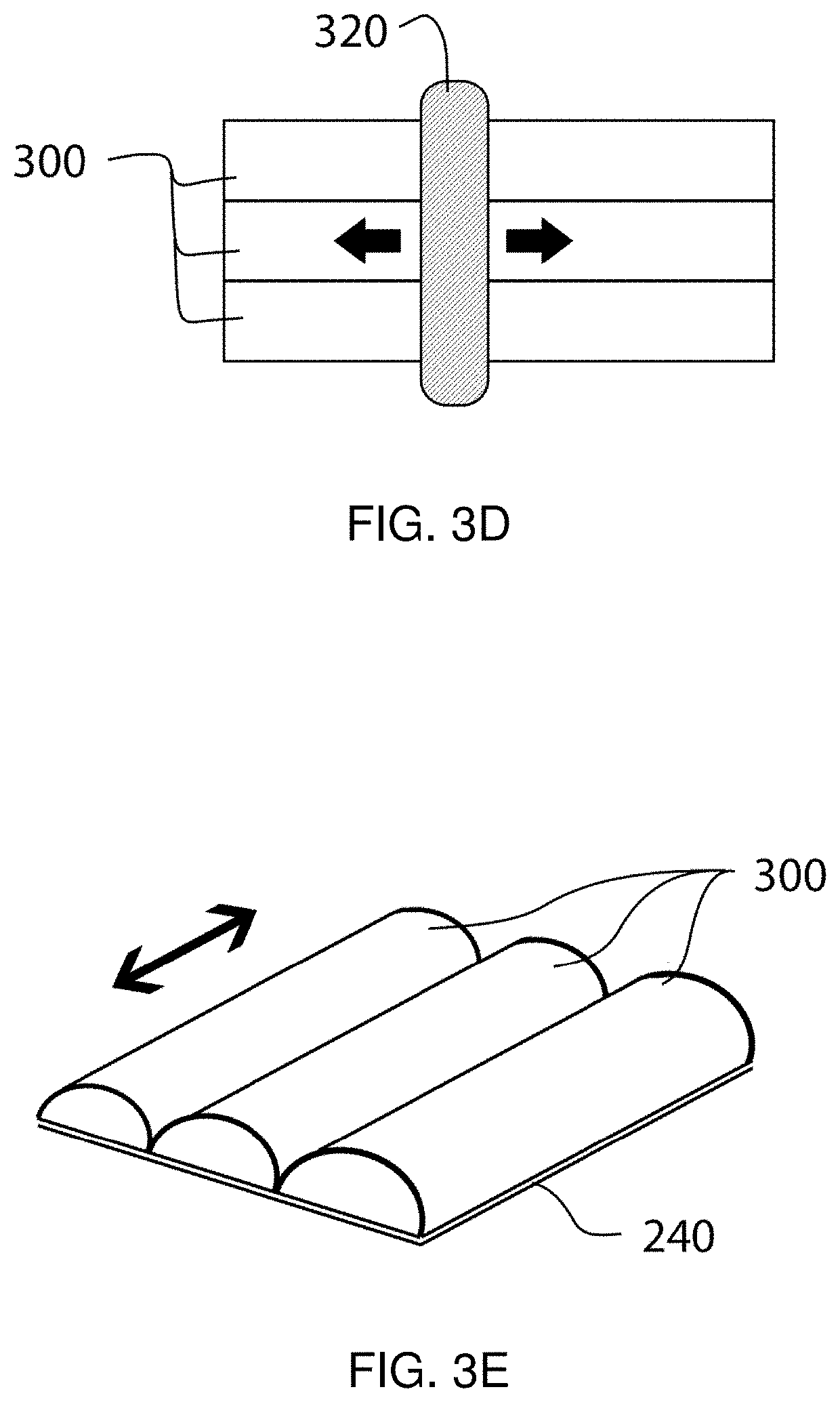Method and apparatus for selective treatment of biological tissue
a biological tissue and selective treatment technology, applied in the field of pigmented biological tissue, can solve the problems of ejection of tissue fragments from the tissue surface, mechanical (as well as thermal) disruption of nearby tissue, and small vapor bubble expansion, so as to facilitate selective energy absorption and avoid unwanted damage to surrounding areas. , the effect of sufficient selective absorption of local energy density
- Summary
- Abstract
- Description
- Claims
- Application Information
AI Technical Summary
Benefits of technology
Problems solved by technology
Method used
Image
Examples
example 1
[0126]An animal study using an exemplary spot-focused laser device and model system were used to test the efficacy of selective plasma formation in skin tissue using optical radiation. The study was performed on a female Yucatan pig, as described below.
[0127]First, a deep-melasma condition was simulated by tattooing the dermis using a melanin-based ink. The ink was prepared by mixing synthetic melanin at a concentration of 20 mg / mL in a 50:50 saline / glycerol solution. The resulting suspension was then agitated prior to being injected into approximately 1″×1″ test sites on the animal subject using a standard tattoo gun, at a depth range of about 200-400 μm. Each test site was provided with a darker black tattooed border using India ink to facilitate identification of the various test sites.
[0128]An exemplary melasma treatment system was constructed based on exemplary embodiments of the present disclosure described herein, which includes a Q-switched 1060 nm Yb-fiber laser with an ave...
example 2
[0136]FIG. 6 shows a further scanned melanin-tattooed test site that was irradiated using the general scan parameters indicated above (e.g., a scan rate of 200 mm / s, a repetition rate of 50 kHz, and six (6) sequential scanned layer depths of 550, 500, 450, 400, 350, and 300 m, and a distance between adjacent scan lines in each plane of 25 μm), with a fiber laser output of 1 W, at various times, in accordance with further embodiments of the present disclosure. Image 610 in FIG. 6 shows the test site just prior to a scanned irradiation using the laser apparatus, and image 612 shows the test site just after the scan was completed. Images 614, 616, 618, 620, and 622 illustrate the appearance of the test site 610 at 1 hour, 3 days, 1 week, 2 weeks, and 4 weeks, respectively, after the irradiation treatment. No plasma formation was observed at this lower power output level.
example 3
[0137]FIGS. 7A and 7B show images of a melanin-tattooed test site that was scanned twice, over two sessions spaced two weeks apart. Both irradiation treatments used a fiber laser with an average power output of 6 W and a pulse repetition rate of 20 kHz. The first scan session targeted more superficial layers (300 um to 550 um) whereas the second scan session targeted deeper layers (550 um to 850 um).
[0138]In particular, FIG. 7A illustrates exemplary results of the first scanned irradiation treatment. Image 710 in FIG. 7A shows the test site just prior to the first scanned irradiation using the laser apparatus, image 712 shows the test site just after the first scan was completed, and image 714 shows the test site 24 hours after the first scan was completed. Images 716, 718, and 720 provided in FIG. 7B show the appearance of the test site 710 just prior to, immediately following, and 24 hours following the second irradiation treatment, respectively. This second deeper irradiation tre...
PUM
 Login to View More
Login to View More Abstract
Description
Claims
Application Information
 Login to View More
Login to View More - R&D
- Intellectual Property
- Life Sciences
- Materials
- Tech Scout
- Unparalleled Data Quality
- Higher Quality Content
- 60% Fewer Hallucinations
Browse by: Latest US Patents, China's latest patents, Technical Efficacy Thesaurus, Application Domain, Technology Topic, Popular Technical Reports.
© 2025 PatSnap. All rights reserved.Legal|Privacy policy|Modern Slavery Act Transparency Statement|Sitemap|About US| Contact US: help@patsnap.com



